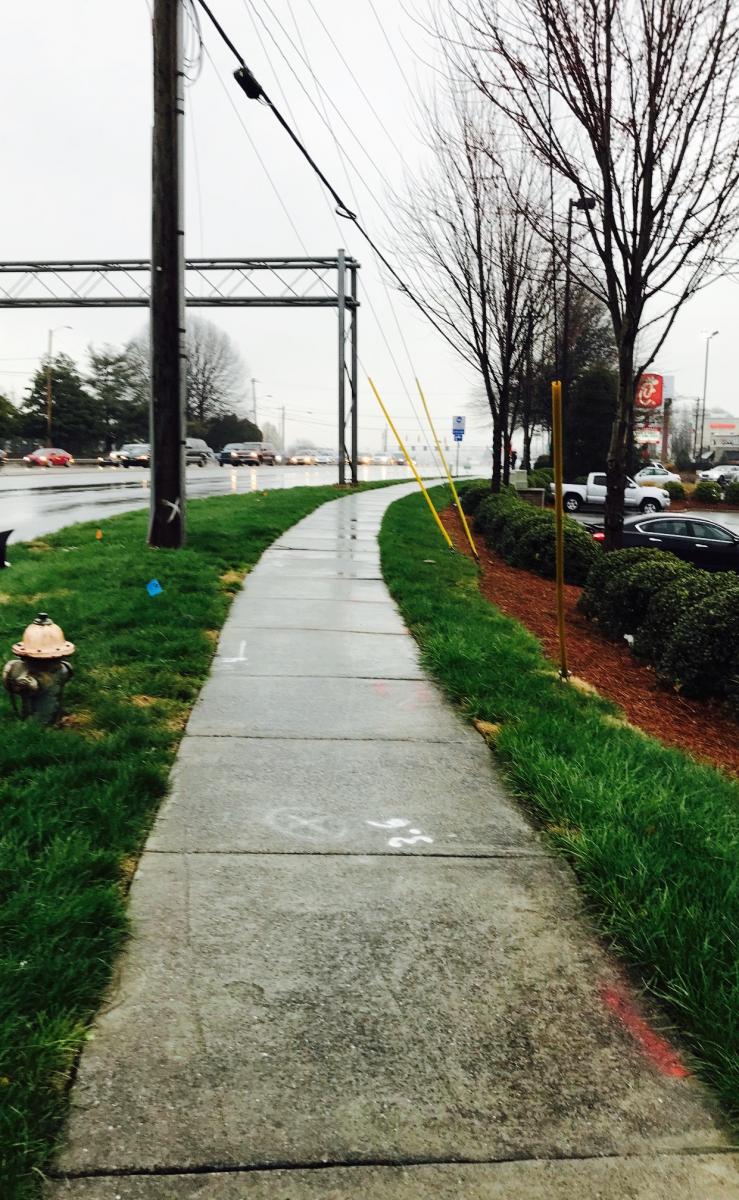The Triad Metropolitan area is expected to see its population grow by nearly 10 percent over the next two decades. As cities position themselves to attract and retain the best and brightest workers, they're finding that walkability is on the minds of many.
88.5 WFDD listener Therese Coon was Carolina Curious.
What are the plans to improve areas like West Wendover Avenue for pedestrians to reach their retail, hotel and/or employment areas safely?

West Wendover is a major thoroughfare in Guilford County — six to eight lanes of busy boulevard traffic weaving for 12 miles through Greensboro residential areas, looping around downtown, and feeding into the I-40 interchange. The intersection at Wendover and Stanley is a scene that's familiar to urban commuters from High Point to Boone: multiple lanes of
rush hour traffic, divided by a median, each side of the roadway lined with densely packed chain stores, restaurants, and hotels.
Our listener, Therese Coon, wondered about the folks that work there.
“The bus had stopped and dropped off employees,” says Coon. “They were crossing three lanes of traffic, getting to the median island and then really watching for that next break in traffic so they could cross the next three lanes to get from the bus stop over to the south side of West Wendover. And that just seemed particularly dangerous.”
Coon says on her daily commute she has also seen families trying to cross there with groceries and children in tow. She says there doesn't seem to be a logical crossing point from one side to the other.
Bicycle and Pedestrian Coordinator and Transportation Planner with the city Daniel Amstutz says they've been considering these issues for some time. He says sidewalks to that section of West Wendover Ave. were added in 2008, along with pedestrian signals, in response to growing demand.
“We want to be a walkable community where people have these different transportation options where they're not required to own a vehicle to get to everywhere they need to go,” says Amstutz.
“It's also supporting the Greensboro Transit Authority, and they've doubled the number of riders that they have in the last ten years to over 4-million riders each year. It makes the city more attractive to new businesses, new residents; there's a resurgence of interest in urban living.”
Amstutz says a transportation bond measure passed in 2000 has enabled the DOT to add hundreds of miles of sidewalks so far. But he acknowledges that there's still much to do, and challenges remain, particularly in high-traffic retail areas.

“What we can do is really limited to the street right-of-way,” says Amstutz. “There are certain requirements we can include with new developments, or redevelopments that come up if they're of a certain size, but there are certain roads that are actually private streets along Wendover corridor that we can't force the private entity to put a sidewalk on there.”
But even after congested intersections have been made walker-friendly, pedestrians still need to be alert, says Department of Transportation Director Adam Fischer.
“We do have pedestrian signals, [but] sometimes people are not pushing the crosswalk button to give them enough time,” says Fischer. “If they don't push the button, it's possible that they would not get enough green time to get across Wendover Avenue.”
Currently 304 of the city's 500 traffic signals are equipped with pedestrian signals. Plans are currently in place to install an additional 76 new signals by 2023. And with the $25-million dollar downtown streetscape bond passed in 2016, many more enhancements to pedestrian accommodations like widening sidewalks, providing outdoor dining, and converting travel lanes to bike paths, are scheduled to roll out soon.
300x250 Ad
300x250 Ad

